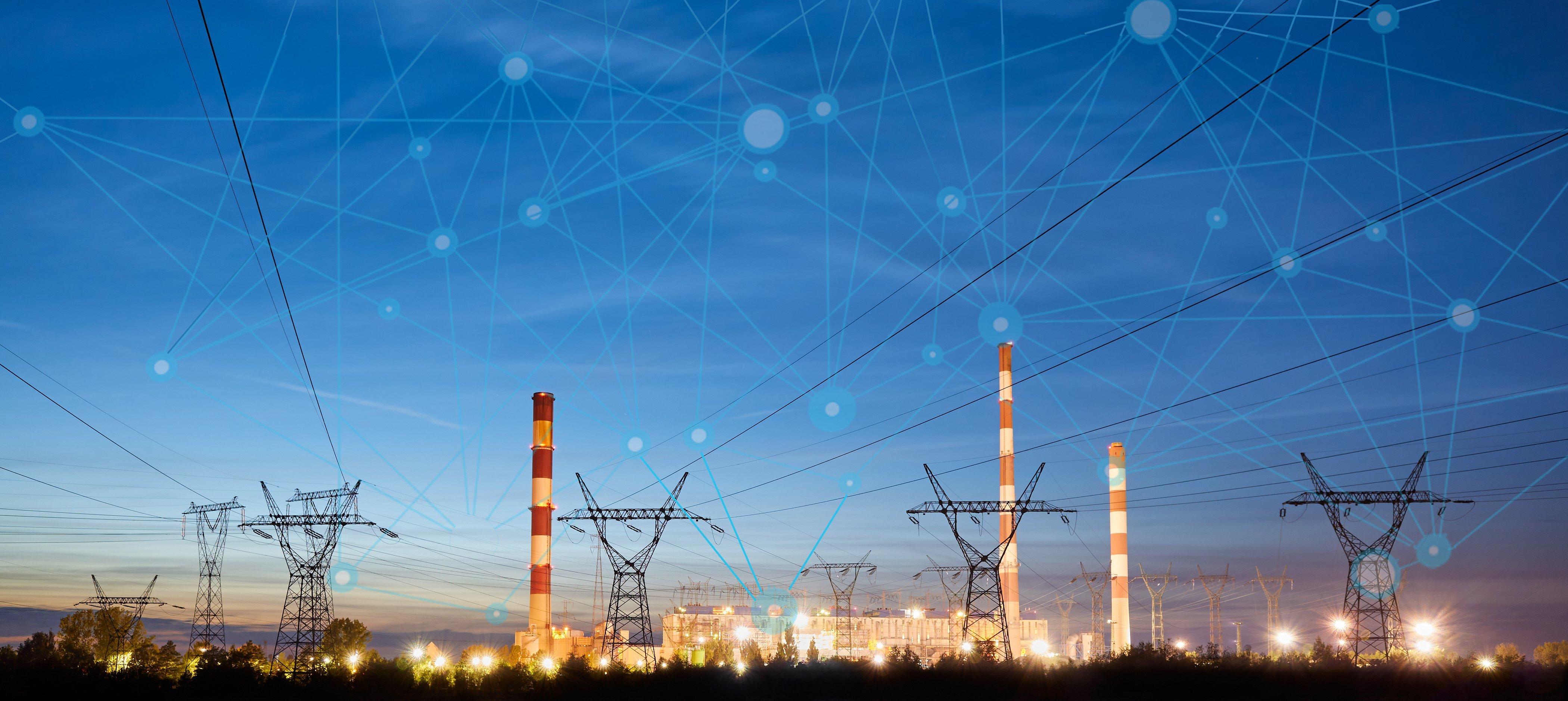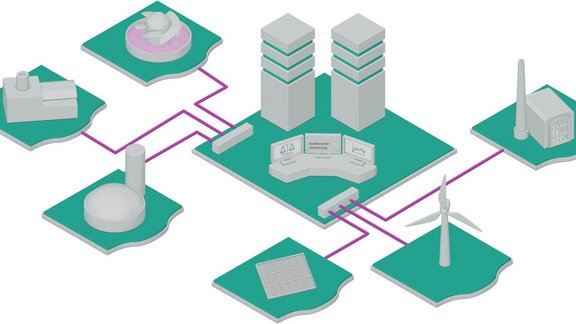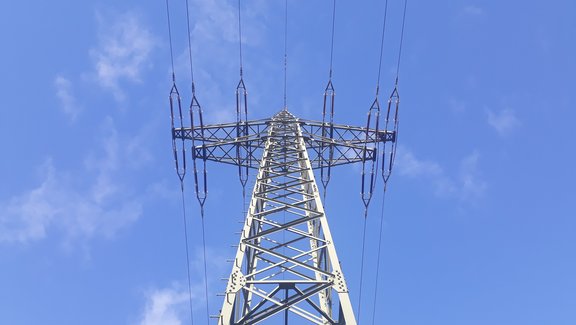DE | EN
Worldwide, more than 70% of energy-related greenhouse gas emissions must be saved by 2050 to meet the challenges of the climate crisis and keep global warming well below 2 °C. This is equivalent to increasing the share of renewables in the electricity mix from 25% in 2017 to 86% in 2050.
Abstract
If we want to keep the costly and time-consuming expansion of the electricity infrastructure to a minimum, the implementation of the energy turnarounds in the electricity sector will require a digitalization of the electricity system, because the shift from fossil, centralized power plants to decentralized, small-scale energy production, transmission and consumption requires digital process control: in order to maintain and stabilize voltage, load control and grid stability in a decentralized electricity system, real-time digital coordination of the increasingly small-scale electricity production and its transport will be necessary. Digital programs and devices will manage the growing number and range of power plants and the accompanying spatiotemporal complexity, readjusting the rhythm of energy and society to meet rising energy demand, increase energy efficiency, and promote the expansion of renewable energy.
At the same time, energy transitions that rely on digitization risk significant increases in energy demand, the emergence of new systemic and individual dependencies, and further concentration of control. Combining decarbonization and digitization risks that positive effects of energy efficiency will primarily benefit a small group of privileged actors who determine the speed and scale of the energy transition, instead of serving the common interest. Against this background, the following questions arise regarding the twin transformation of energy and digitalization:
Who is digitizing the energy infrastructure and what is driving decision-making? How do digital technology, new actors, and existing power grid infrastructures and path dependencies influence justice effects of infrastructural changes? How does digitization affect the perception and lived experience of human interaction with electricity, and how does it change the value we place on energy?
In other words: What do we gain and what do we lose by moving away from fossil energy and its infrastructure and toward a hybrid, digitized energy system? What are the opportunities and risks of the energy transition if we understand it as a transformation from coal production to data generation?
The research project DigitalEnergy investigates socio-technical constellations and potential power shifts in the context of the energy transition and digitalization. It connects and extends research in the field of digitalization and energy sciences by bringing together societal conflict fields of sustainability transformation and digital automation as technological innovations with potential monopolizations and polarizations. The project focuses on digitalization of electricity production and transmission networks and thus further develops previous digital energy research, which primarily investigates the use of smart meters and thus digital electricity consumption control. However, measures on the consumer side are not the sole solution for ensuring grid stability, balancing load peaks, maintaining voltage and frequency, and coordinating generation and consumption. The 'smart grid', which is often talked about in the media but is still far from being implemented, is only part of the answer to the challenges that a decentralized power generation brings. Digitising power generation and transmission is the other part, and the one DigitalEnergy turns to. DigitalEnergy examines the conversion of our electricity systems to digital control and creates a deeper understanding of the twin transformation in its socio-technical, power-political and energy-cultural dimensions.
Within this context, DigitalEnergy consists of two sub projects: Digital Energy Transformation through Virtual Power Plants and Electricity Platforms and the Value of Hyperobjects.
Subproject 1: Digital Energy Transformation through Virtual Power Plants
These insights from Internet and Digital Studies have rarely been connected to those of Energy Humanities beyond the control over generated data in smart meter installations. In studies of smart meter pilots, it has become apparent that technologies have not been particularly well designed to meet the culturally diverse needs of consumers and energy communities. Moreover, with few exceptions, a technological-economic perspective prevails in research that emphasizes the benefits of smart power technologies for individuals, but overlooks social aspects and values.
Virtual Power Plants (VPPs) are a form of smart grid in which software is used to aggregate and control various decentralized power generation and storage units (DER). The virtual power plant operates as a unit similar to a conventional power plant to support grid stability and can also participate in the electricity market. Virtual power plants are starting to be established in different constellations of control architecture, portfolio of distributed generation units and with different roles in the power system in Europe and will play an important role in the future depending on the constitution of the national power systems: In Europe, the European Commission has decided with the Green New Deal and the Clean Energy Package to have the electricity production of the member states converted to renewable energies and optimized energy efficiency by 2050 with the help of digital systems. The course for this is now being set by pilot projects and creating framework conditions for VPPs.
Against this background, the research project investigates whether and how VPPs plants challenge existing power generation and control systems and to what extent the decentralization of generation and the economic, community or ecological motivation behind it are reflected in the concrete design and implementation – the programming of the energy management system with its access authorizations. In this context, it is important to understand the switch to renewables that are digitally controlled not only as a climate policy-technical necessity but, in the sense of a double transformation, as a far-reaching change and decision-making process in which new infrastructures set the framework for future energy technology regulations as well as social control mechanisms induced by them.
Subproject 2: Power Platforms and the Value of Hyperobjects
This subproject analyzes Virtual Power Plants and other examples of electricity generation and distribution platforms to examine elements of platform logic in the electricity sector with a more media-theoretical view. Power platforms on the internet use a language of access, sharing, and opportunity that other online sectors also use, positioning themselves as part of a sharing economy or making use of its vocabulary. While online platforms are successful globally as a new B2B form and medium of direct communication between users, they also produce new uncertainties and dependencies. Platforms such as AirBnB, Uber, Facebook and MechanicalTurk are well known for their potential to undermine workers' protections and circumvent taxes and duties, while at the same time the generation of information by algorithms can no longer be assumed to be understood by users. Applied to the energy sector, this raises the questions of how electricity platforms succeed in making electricity and its interconnectedness visible and comprehensible to users through the ideas of personalization, climate protection and community, and how electricity platforms change the value we place on electricity.
Contact

Photos:
- https://www.istockphoto.com/de/help/licenses , adaptiert/verändert
- CC BY-SA 4.0 , NextKraftwerke, adaptiert/verändert
- Katja Müller


